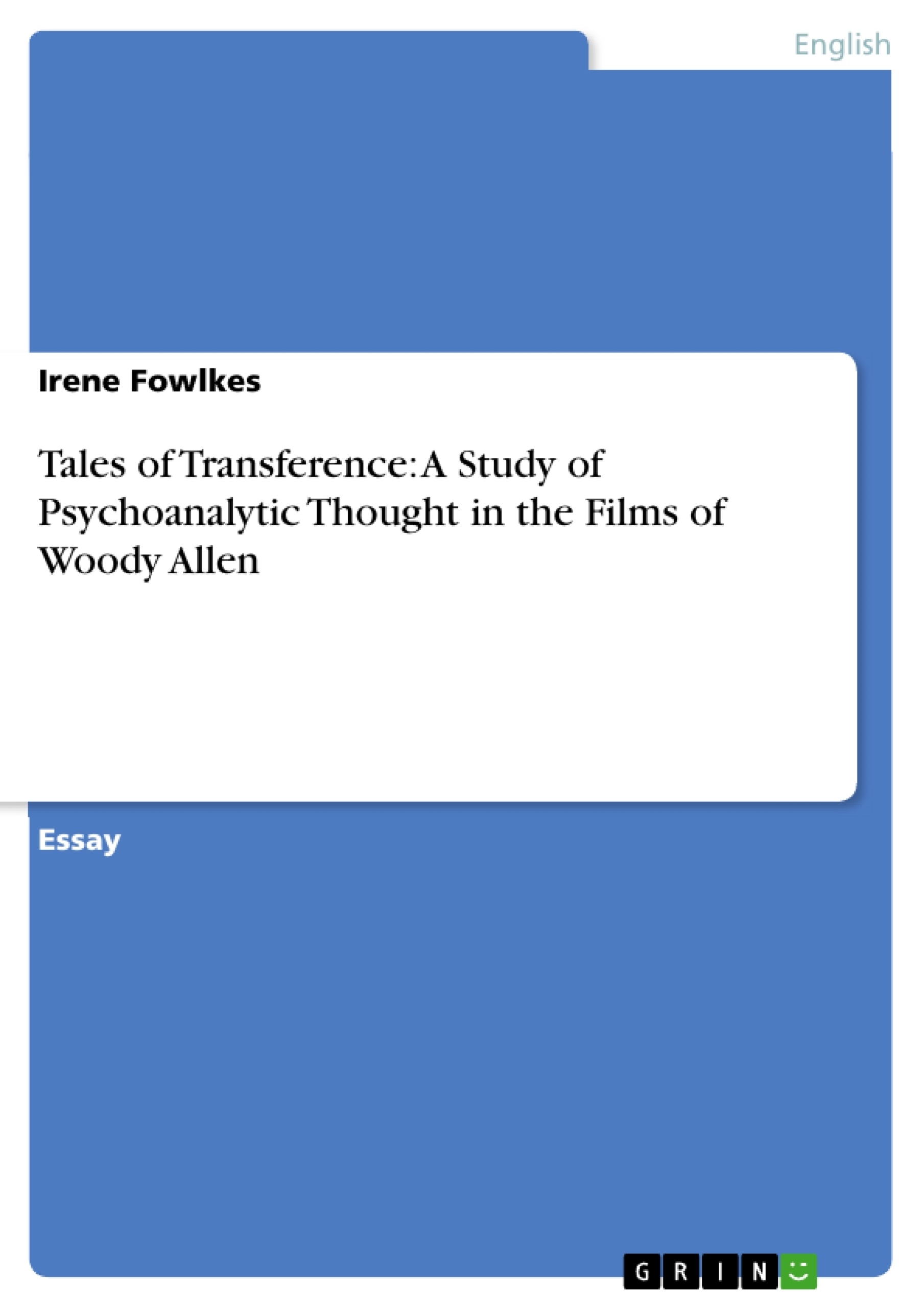The paper delivers a survey of American actor and director Woody Allen’s cinematography. It reveals a preoccupation with the doctrine of psychoanalysis over the course of his entire thirty year artistic output, in the context of which the theory’s various conceptual and methodological elements are debated. They are intertwined with narrative structure, character development and formation of dialogue, technical aspects as well as the nature of comedy versus tragedy as implicit in the question of the general purpose of art.
Inhaltsverzeichnis (Table of Contents)
- Introduction
- Unresolved Childhood Trauma and Transference
- Filmic Devices for Unconscious Expression
- Art as Therapy
- Lacanian Psychoanalysis and Film
- Technology and Psychoanalysis
- Space and Psychoanalysis
- Conclusion
Zielsetzung und Themenschwerpunkte (Objectives and Key Themes)
The author aims to examine the influence of psychoanalytic thought on Woody Allen's filmography, focusing on specific films that offer a rich exploration of the concept. The analysis focuses on recurring themes, filmic techniques, and characters that embody psychoanalytic ideas.
- Unresolved childhood trauma as a driving force in character behavior
- The use of filmic devices to represent the unconscious
- The intertwining of art and psychoanalysis
- The role of transference and counter-transference in the therapeutic relationship
- The impact of space and location on character psychology
Zusammenfassung der Kapitel (Chapter Summaries)
- The Introduction establishes the connection between Woody Allen’s work and psychoanalytic theory, highlighting the recurring themes of death drive, unresolved childhood trauma, and therapeutic interventions.
- The chapter on Unresolved Childhood Trauma and Transference explores how characters like Lee, Leonard, and Gabe are driven by unresolved childhood issues and how these issues manifest in their relationships and behavior.
- The chapter on Filmic Devices for Unconscious Expression discusses the innovative ways Allen employs various techniques like voice-over, animation, split-screen, and phantom figures to represent the characters' inner world and unconscious desires.
- The chapter on Art as Therapy examines how the characters' artistic pursuits and creative processes serve as a form of therapy, allowing them to process their emotions and experiences.
- The chapter on Lacanian Psychoanalysis and Film investigates the concept of the camera as an extension of the dream, drawing parallels to Lacanian psychoanalysis. It analyzes the way the camera’s gaze and the subsequent interpretation by the audience represent the unconscious.
- The chapter on Technology and Psychoanalysis explores how the characters' interactions with technology, such as the anxiety of medical testing or the use of the camera as a therapeutic tool, further highlight the complex relationship between technology and psychoanalysis.
- The chapter on Space and Psychoanalysis examines the significance of New York City as a setting for the films and its role in shaping the characters' experiences and psychology.
Schlüsselwörter (Keywords)
The text examines the intersection of psychoanalytic theory and film through the lens of Woody Allen's work. Key themes include unresolved childhood trauma, transference, filmic techniques, art therapy, Lacanian psychoanalysis, technology and psychoanalysis, space and psychoanalysis, and the concept of the unconscious.
- Citar trabajo
- Irene Fowlkes (Autor), 2008, Tales of Transference: A Study of Psychoanalytic Thought in the Films of Woody Allen, Múnich, GRIN Verlag, https://www.grin.com/document/169016



